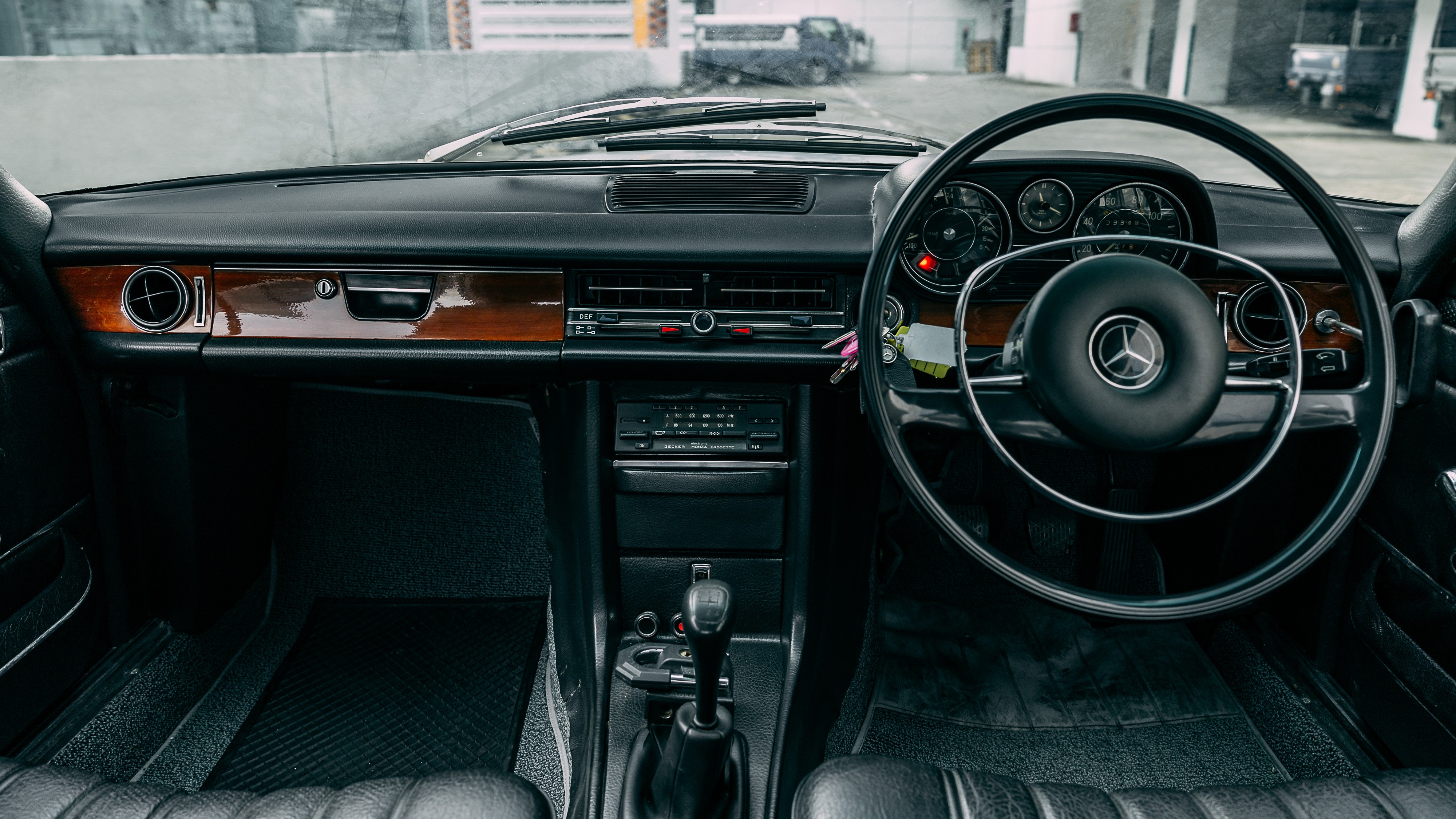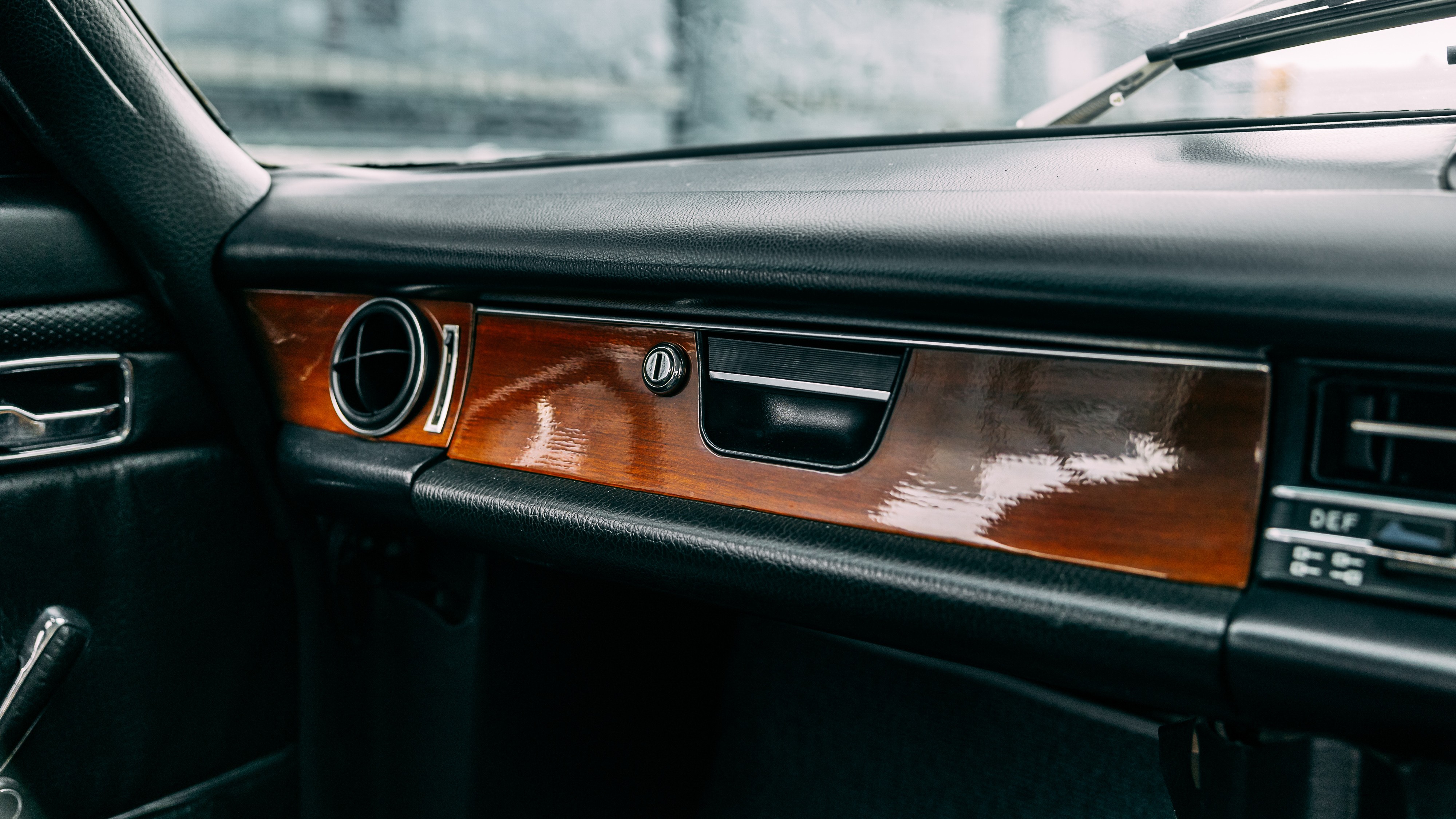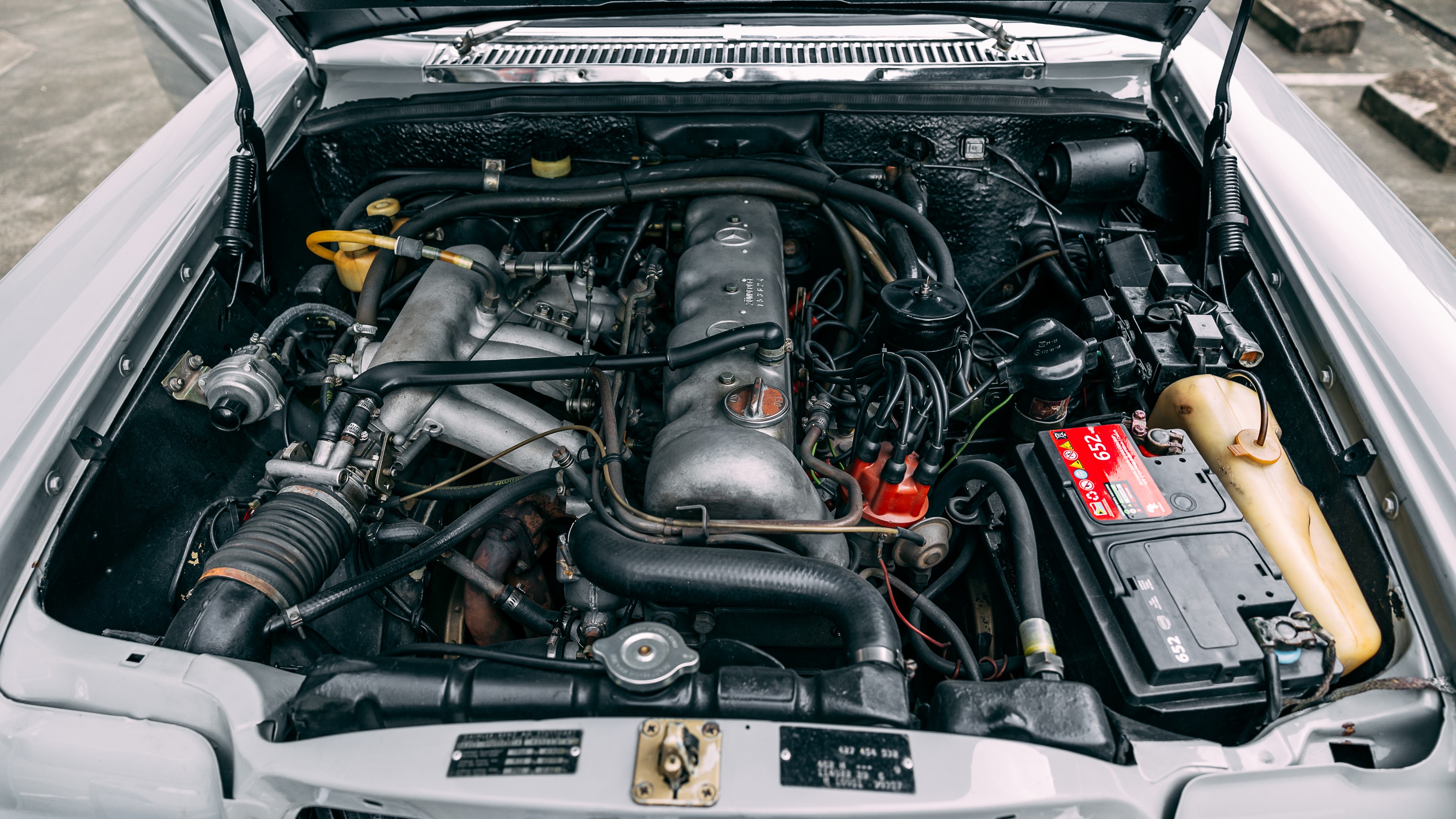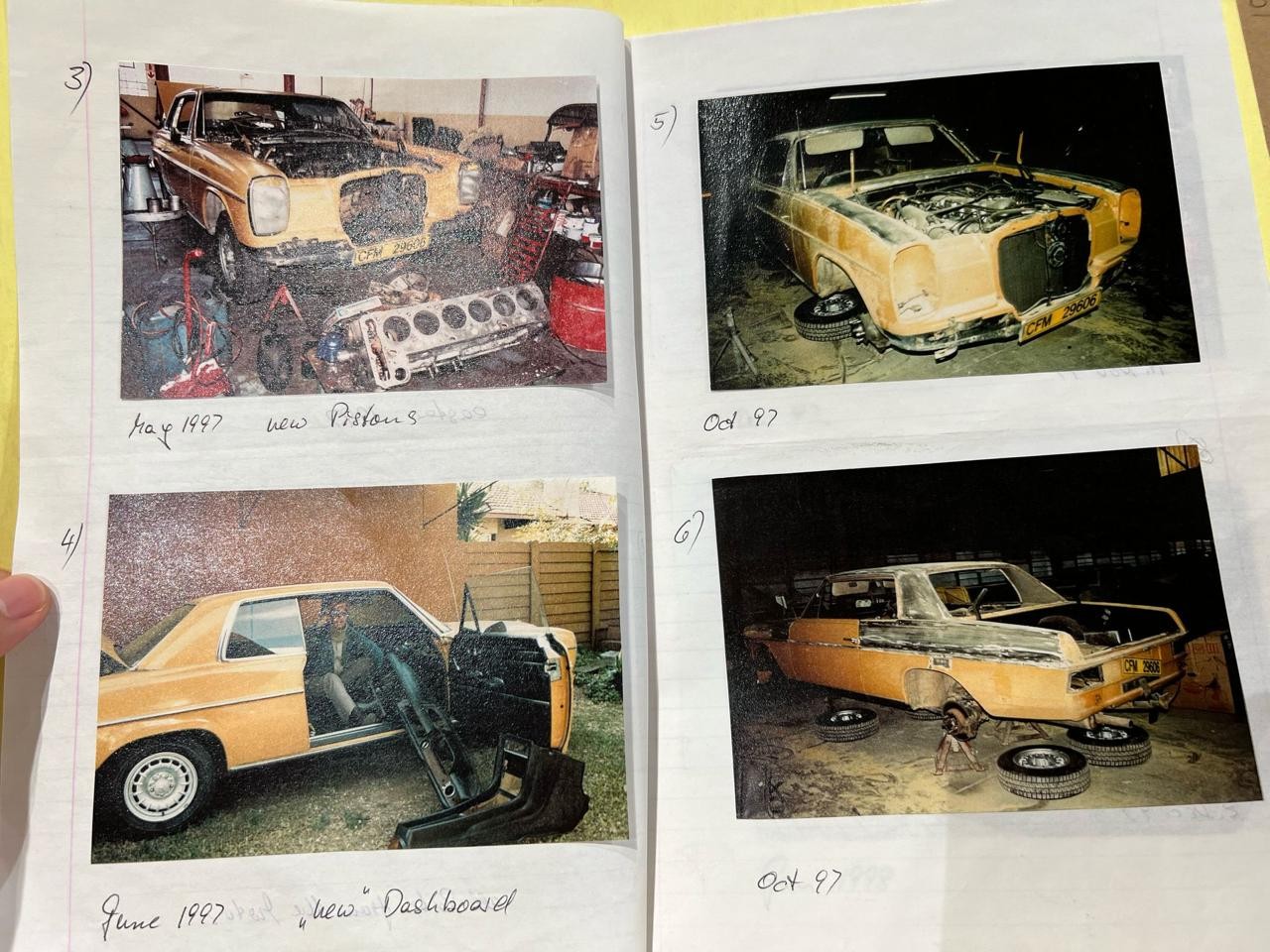1970 Mercedes-Benz 250 CE: The Analog Assassin

Jamie Ong
Luxury, Manual, and Mercilessly Cool
Built Before the Badge Meant Status
Before AMG went global and before “luxury performance” was a marketing cliché, Mercedes dropped the W114. Designed under Friedrich Geiger (yes, the 300SL Gullwing guy), this was Stuttgart’s idea of a gentleman’s coupe - with the guts of a back-alley streetfighter.
Friedrich Geiger penned the lines, but it was Rudolf Uhlenhaut’s engineering fingerprints that gave the W114 250 CE its backbone. Geiger, the same mastermind behind the 300SL Gullwing, crafted the coupe’s crisp, balanced silhouette. But Uhlenhaut - Mercedes’ legendary performance guru - set the tone underneath, with the kind of chassis tuning and suspension geometry that made this car feel planted, poised, and subtly aggressive. One drew it, the other made it drive like it mattered.
The 250 CE was the crown jewel. Fuel-injected inline-six. A chassis that didn’t flinch. And that pillarless coupe profile? Still turns more heads than most modern exotics.
Design: Simplicity as a Superpower

With its long hood, frameless doors, and pillarless greenhouse, the 250 CE isn’t just beautiful - it’s timeless. Every line has purpose. The coupe body rides low and wide, with just enough chrome to whisper class without screaming for attention.
Mercedes called this “restrained elegance.” Today, it reads like design discipline - something lost on its descendants. And because this car isn’t over-styled, it still looks just as striking parked at a concours or tearing down a B-road as it did in 1970.
Interior: Tactile Luxury, No Screens Needed

The cockpit is a masterclass in purposeful luxury. Leather, real Zebrano wood, and switchgear you could use with driving gloves. No touchscreens. No ambient light shows. Just timeless materials, honest craftsmanship, and the unmistakable smell of vintage Mercedes engineering. Ergonomics were ahead of their time - everything falls to hand, and everything still works.


Originally delivered new to South Africa in 1970, it has lived a life worth telling. Under the care of a devoted owner, it underwent a meticulous multi-year restoration that elevated it from a sun-faded factory yellow coupe to a rich, head-turning red/maroon stunner. More than just a cosmetic revival, the car received a full engine rebuild with new pistons in 1997, ensuring that its mechanical soul matches its visual brilliance without stripping it away. It’s not retrofitted. It’s resurrected.
Legacy: Quiet Influence, Loud Impact
The W114 platform laid the groundwork for what would become the E-Class - a benchmark segment Mercedes still owns today. The obsession with over-engineering, safety (yes, crumple zones were pioneered here), and composure at high speed? You won’t see it on the Nürburgring leaderboard, but in the collector world, it’s climbing its own podium.
Collector Heat: Quietly Catching Fire
Let’s talk collector cred because the 250 CE has it in spades. It was the first Mercedes-Benz coupe with electronic fuel injection. It came in factory-built RHD, no shady conversions required. Only 19,000 W114 coupes were ever produced. Manual 250 CE models? Almost unicorns. And when you factor in low-mileage survivors, restored with care, the supply dwindles to double digits globally. It helped define the luxury-performance coupe template that cars like the E24, GTV6, and even early AMGs chased.
The collector market is waking up to it. The market still hasn’t caught up to the quality of these cars - which makes now the smart time to buy. It’s the kind of car that disappears from listings and resurfaces years later with another zero on the price tag.
Prices for mechanically sound, original examples - especially RHD models - are already on the move. According to Hagerty Insider’s 2024 trends, analog-era Euro coupes with motorsport DNA and engineering purity are entering the appreciation curve. The 250 CE is not a back-catalog filler anymore - it’s a hidden gem about to break cover.
According to Classic.com, the average sale price is creeping past $20K - and the smart money knows that’s still undervalued for what this car represents. Find a clean, manual example with provenance and you're not buying a car - you’re buying a ticket into an elite club of analog purists.
Insider Knowledge for the Drivers Who Actually Drive
Few know this, but that Bosch D-Jetronic system? It wasn’t just cool tech - it was derived and inspired from Bosch’s aerospace division. That’s real electronic fuel metering tech on a German street coupe...in 1970. And yes, it works brilliantly when dialed in.
The 250 CE was one of the first production Mercedes to run Bosch’s D-Jetronic electronic fuel injection system - a system that debuted on high-end European models like the Type 3 VW 1600 and early Porsche 914s. This wasn’t mechanical injection like the 300SL or diesel pump systems - it was true analog electronic injection, years before EFI became mainstream.

It's the same tech DNA that fed into Porsche's 911 2.4E and Jaguar's V12s. And it makes tuning and diagnostics a total analog art form. No OBD2. No plug-in scanners. Just sensors, solenoids, and old-school sorcery. The 250CE has real legs with a 2.5L inline-six. A chassis that cruises at 120mph like it was sipping tea. This is a refined weapon - the kind of machine that doesn’t bark. It just moves.
The 250CE isn’t for the casual admirer. It’s a rare slice of Mercedes-Benz engineering history, where analog design met electronic ambition. With fewer and fewer surviving examples running their original D-Jet systems, this car stands tall not just as a collector’s piece - but as a defiant reminder that some machines are worth the fight.
The Coupé That Fought Back
Every collection has its war story. As featured in Classic Cars Magazine, for Graham van Heerden, the 1971 Mercedes-Benz 250CE Coupé was the one that nearly broke him - but ultimately became one of his proudest battles won.
It started with a phone call and a trusted club contact. A 250CE was up for grabs in Johannesburg - rare, fuel-injected, and fitted with a factory two-tone paint scheme. On paper, it was the unicorn. Sight unseen? No problem. When you’ve spent years knee-deep in Pontons, Fintails and early S-Classes, you learn to read between the lines.
But when Graham laid eyes on the car, it hit like a cold start on a winter morning. Rough didn’t begin to describe it. “It wasn’t what was advertised. Not even close,” he says. The chrome was pitted, the electronics were sketchy, and the signature D-Jetronic injection system - if still operational - was on borrowed time.


Still, walking away wasn’t in his DNA. Bad ribs, rain pouring down, and a half-dead Coupé - he drove it all the way back to Cape Town. By the time they rolled into his garage, the car was soaked, sulking, and in worse shape than before.
But Graham knew what he had. The 250CE wasn’t just rare - it was a turning point in Mercedes-Benz engineering. The Bosch D-Jetronic was their first crack at electronic fuel injection, years ahead of its time. And the factory paint combo? Only a handful were ever spec’d like this. “This was one of the few models where Mercedes began experimenting with early electronic fuel injection. It’s a different beast entirely,” Graham notes.
Restoration took years. You don’t rush a car like this - not if you want to do it right. The injection system alone was a specialist’s nightmare, requiring parts sourced across continents and expertise that’s drying up by the decade. The bodywork had to be stripped and repainted to factory code, down to the crisp black roofline. Everything was rebuilt, refined, and reassembled like a precision instrument.
Today, the car doesn’t just sit pretty - it growls with quiet defiance. It’s a car that refused to go down easy, and one that now carries the kind of provenance and detail only a true marque obsessive could ever bring back to life.
“This one nearly put me off,” Graham admits with a grin. “But when you finally hear it fire up and idle just right - you remember exactly why you do it.”
Final Verdict: The Gentleman’s GT with a Streetfighter’s Soul
The 1970 Mercedes-Benz 250 CE wasn’t built to be famous. It was built to last. And fifty years later, it’s become exactly what the best collector cars become: misunderstood in its time, coveted in ours. The 250 CE isn’t just “cool vintage Merc” material. It’s an investment with teeth. It carries the DNA of the machines that followed - but with originality, scarcity, and historical context that’s now just being fully recognized.
Today, it’s not just a car. It’s a keystone - the kind of machine that turns heads in a collection because only a few really know what they’re looking at. If you're the kind of collector who appreciates form over flash for a well-preserved classic and a piece of South African automotive heritage you already get it. Private viewings are available by appointment. Reach out via WhatsApp, drop us an email, or use the contact form here.